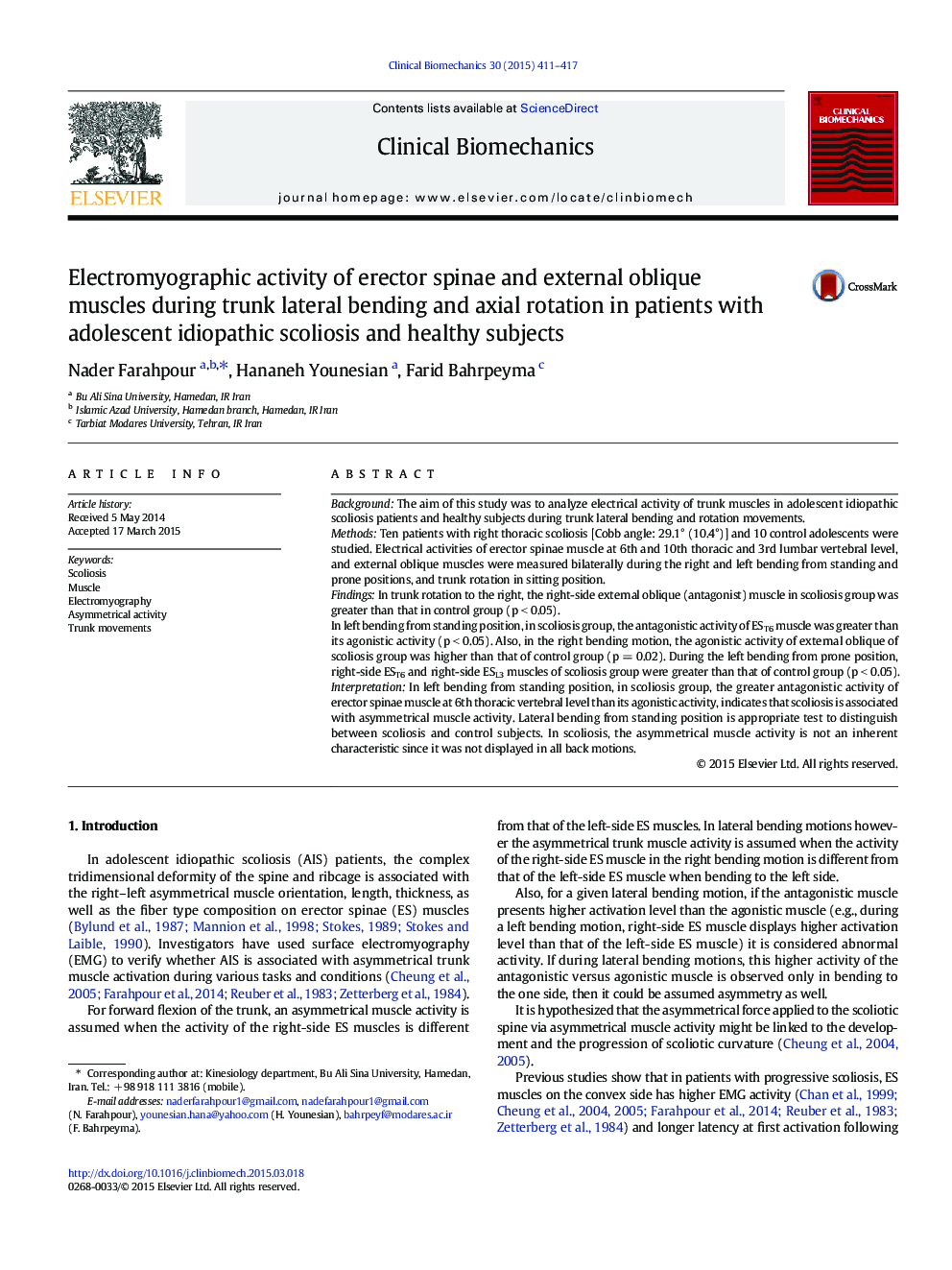| کد مقاله | کد نشریه | سال انتشار | مقاله انگلیسی | نسخه تمام متن |
|---|---|---|---|---|
| 6204785 | 1264918 | 2015 | 7 صفحه PDF | دانلود رایگان |

- Scoliosis is associated with asymmetrical and higher back muscle activity.
- Asymmetrical and higher muscle activity in scoliosis does not appear in all motions.
- Abnormal muscle activity in scoliosis is not an inherent characteristics.
BackgroundThe aim of this study was to analyze electrical activity of trunk muscles in adolescent idiopathic scoliosis patients and healthy subjects during trunk lateral bending and rotation movements.MethodsTen patients with right thoracic scoliosis [Cobb angle: 29.1° (10.4°)] and 10 control adolescents were studied. Electrical activities of erector spinae muscle at 6th and 10th thoracic and 3rd lumbar vertebral level, and external oblique muscles were measured bilaterally during the right and left bending from standing and prone positions, and trunk rotation in sitting position.FindingsIn trunk rotation to the right, the right-side external oblique (antagonist) muscle in scoliosis group was greater than that in control group (p < 0.05).In left bending from standing position, in scoliosis group, the antagonistic activity of EST6 muscle was greater than its agonistic activity (p < 0.05). Also, in the right bending motion, the agonistic activity of external oblique of scoliosis group was higher than that of control group (p = 0.02). During the left bending from prone position, right-side EST6 and right-side ESL3 muscles of scoliosis group were greater than that of control group (p < 0.05).InterpretationIn left bending from standing position, in scoliosis group, the greater antagonistic activity of erector spinae muscle at 6th thoracic vertebral level than its agonistic activity, indicates that scoliosis is associated with asymmetrical muscle activity. Lateral bending from standing position is appropriate test to distinguish between scoliosis and control subjects. In scoliosis, the asymmetrical muscle activity is not an inherent characteristic since it was not displayed in all back motions.
Journal: Clinical Biomechanics - Volume 30, Issue 5, June 2015, Pages 411-417